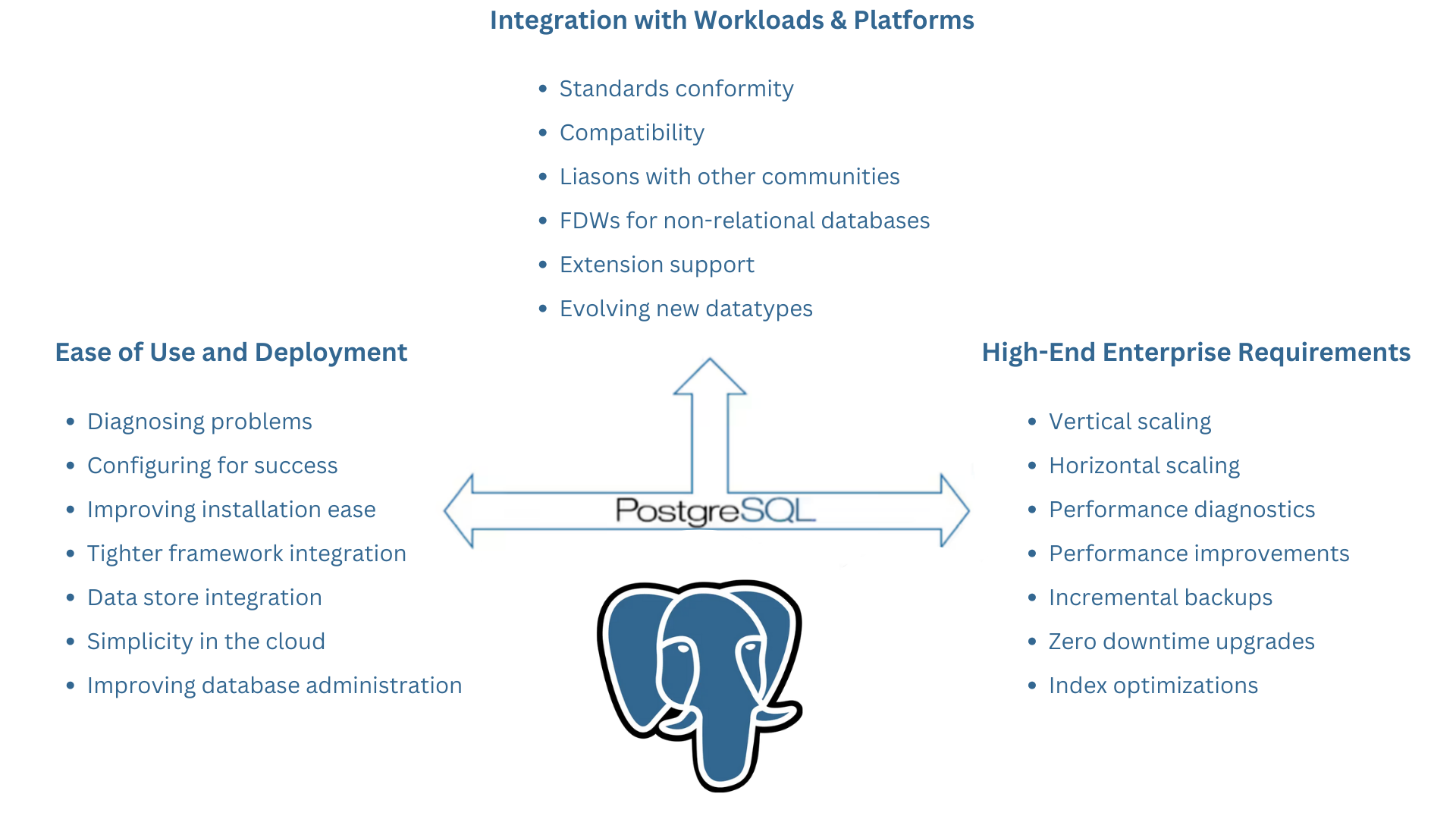PostgreSQL is having a moment—in recent years it’s skyrocketed in popularity across industries and established itself as the go-to database for innovation leaders. It’s the first three-time winner of DBMS of the year (DB Engines in 2017, 2018, and 2020) and is considered the most loved and wanted database technology by developers (according to Stack Overflow’s 2022 Developers Survey). It even was recognized as the Readers’ Choice in 2022 for the category of Best Data and AI Product or Technology: Transactional Database.
Of course, for those who know PostgreSQL best, this is no surprise. In fact, it’s been a long time coming. Actively developed over the last 35 years, PostgreSQL has evolved like few of its counterparts.
Why? What is driving PostgreSQL’s ongoing growth and current success?
In one word: community. One of PostgreSQL’s greatest strengths is that it’s community driven.
In this blog, we’ll help those considering PostgreSQL–and those who have already been enjoying its benefits– understand:
- What that means
- Why it matters
How does community empower PostgreSQL?
Community driven open source software (OSS) is collaborative and long-lasting in nature. These kinds of projects are fully transparent; driven by free and open development. Running OSS leads to heightened innovation, flexibility and agility in technology choices, and inherently heightened security, scalability, accessibility, and endurance. Rather than a single set of eyes and minds producing software as you’ll see with proprietary or vendor governed open source models, you have diverse, globally distributed contributions to a single product—far greater coverage, testing, and thorough development than traditionally seen with commercial software. Bug fixes and feature additions are turned around much more rapidly and with greater collaboration than would be possible otherwise.
This open source advantage is reflected in the resiliency and flexibility of PostgreSQL. The active community continuously develops the system in many directions at once. Goals of development include improving the ease of use and deployment, addressing high-end enterprise requirements, and integrating with new workloads, platforms, and communities. Integration is such an important focus for the development team, that there is a huge emphasis placed on standards conformity for the sake of compatibility. Bug reports are handled quickly, and the community listens to feature requests and real world use cases to further the software in relevant and effective ways.

To give a little more insight through numbers into the robustness of this object-relational database management system (ORDBMS), as of PG15 there are over 400 code contributors with over 140 supporting companies, along with 55,000+ total commits to the codebase and over 1,600,000 lines of C alone. The source code is considered to be very clean and well-commented, making it a great choice for developers who need to understand the internal workings of the database system.
Major versions are released annually with around 180 features per major release, in addition to quarterly minor releases that contain many small improvements and fixes. It’s also compatible with a wide range of operating systems, platforms, and development languages that allow it to be integrated—well, pretty much anywhere.
When comparing PostgreSQL to market alternatives, it’s important to also remember that Postgres is not just a relational database system: it’s object-relational, and has been designed to handle a wide range of use cases. Whether you need to work with JSON/JSONB, XML, Key-Value, geometric, geospatial, native UUID, or even time-series data types—you’re set. This extensive support for different data types, along with being designed with ACID (Atomicity, Consistency, Isolation, Durability) characteristics, enable optimized, performant, and reliable data handling—no matter what data or requirements are in place.
There’s even a huge community-driven extension network that builds on Postgres’ native extensibility and flexibility in working with a variety of applications. Extensions for almost every purpose can be found—including handling geospatial objects, supporting disaster recovery, enforcing a highly available infrastructure, adding monitoring and auditing capabilities, and much more.
If Postgres seems like it’s the database of choice for your application or company, you don’t need to feel alone. We here at EDB are here to help with your PostgreSQL instances, extensions, and database architecture—no matter what your goals are or where you’re coming from. Whether you’re looking for smoother day-to-day operations and maintenance, optimized performance and tuning, monitoring, security, a fully-managed infrastructure or versatility in deployment options—on-premise, in the public cloud, private cloud, or hybrid and multi-cloud architectures— our Postgres experts are prepared to help every step of the way. Learn more about our commitment to the PostgreSQL community and true expertise—we look forward to hearing if any of our products, services, or solutions are the right fit for you.
